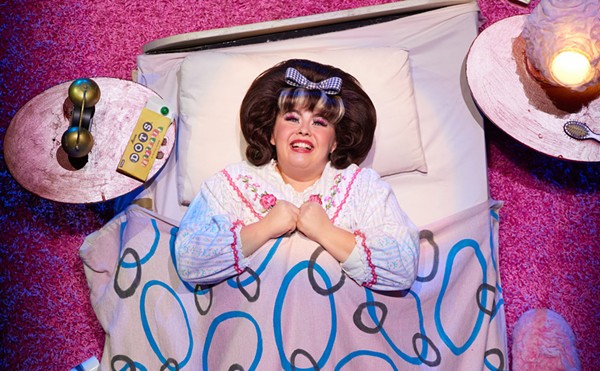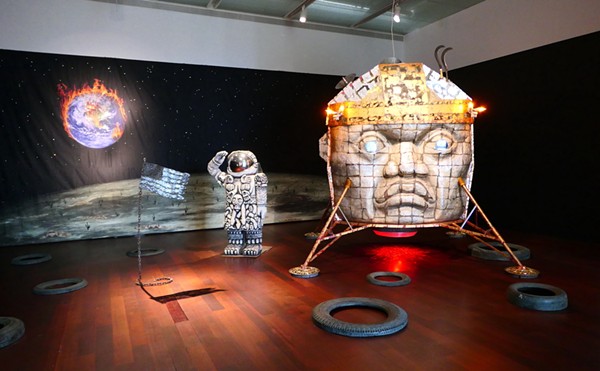Those who closely follow the happenings in the San Antonio art world were surprised when news broke back in March that Anna Stothart was leaving
her position as the San Antonio Museum of Art’s Brown Foundation Curator of Modern and Contemporary Art after just a year on the job. Stothart, who split to take a position as director of Lehmann Maupin Gallery in New York, had overseen several seminal exhibitions (including the superb “28 Chinese” show), revamped SAMA's contemporary galleries and developed a positive rapport with the broader art community, working closely with Contemporary Art Month and Luminaria. But now, as of Monday, June 20, local art lovers have a brilliant new curator to get acquainted with and a new style to look forward to learning from.
How did you get into the curating game and what attracted you to it?
“It was by chance [that I ended up a curator], it was certainly no master plan. My background is in psychology and I was working with adolescents with behavioral disorders and who were emotionally disturbed. But, I was living in New Hampshire, in Maine, in New England in general, and I found myself going to museums and galleries all the time. And I started to ask myself why I was so powerfully affected by this art. Then it hit me one day at the Museum of Fine Arts in Boston: I was like, "Oh my god, I’ve got to study art." So I came back home and started all over, studying art at the University of North Texas. So, I met all these people who were artists and who were studying art, and I was hanging out in galleries and studios all the time. One day I just decided to put together a show there. So, I did just that, I got together some musician friends and some artists who I liked, I rented a warehouse space and wrote an essay and the rest is history. It’s funny, now, when I teach [students] curatorial studies or museum studies, I always tell them you have to love art, you have to have an idea and go out and make it happen. You can learn all the history and theory in the world, but there’s no substitute for pounding the pavement, for trial and error, for spending time with artists out in the community. That background, working in that artist-centered way, leads me to see myself as a curator, as an advocate for artists and works of art.”
Recently, in San Antonio, the arts community has been shaken up by battles concerning diversity and inclusion, particularly where our Latin@ community is concerned. Can you tell me a bit about how you curate with the population of a particular community in mind?
It is a moral responsibility that, when you go into a community, to serve it in any capacity, you do research on the people, you form relationships and you see yourself as a collaborator first. It would be unconscionable to see it otherwise. You have to know the local community to really understand the global community, right? I want all stakeholders in the San Antonio art community to have input, to participate. We are all in the same boat and want the same things: to raise the discourse on intellectual, cultural and artistic issues. To raise that level of discourse, we all have to work together.
How do you make your subjective aesthetic observations into objective gallery set-ups?
Over time you develop an instinct. I mean, you learn all sorts of things as you go and as you study, and that’s good. But, at a certain point, when I’m setting up an exhibition, I have to stop thinking too much about it and let my feelings guide me. It is a balance of subjective and objective, but ultimately you have to go back to considering what the art makes you feel.
For folks who don’t regularly take in art, can you explain what you see as the value of art to the contemporary person?
To anyone who sees art as frivolous or unnecessary, I would challenge them: Is empathy frivolous? Is critical thinking unnecessary? When you take the time to understand the thought and processes behind a work of art, you practice empathetic thinking and critical thinking. And these are things we could really use in our world today.


















